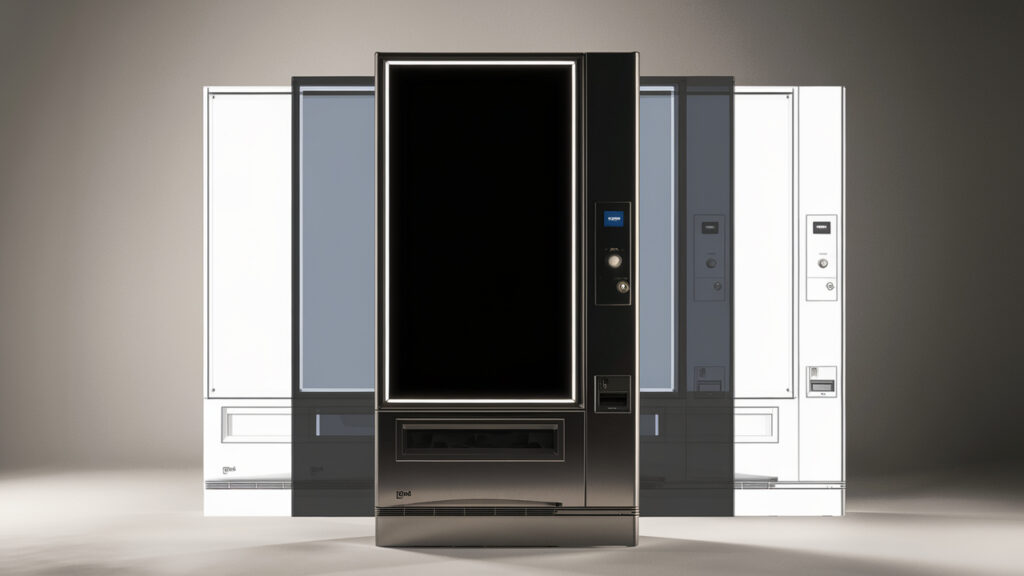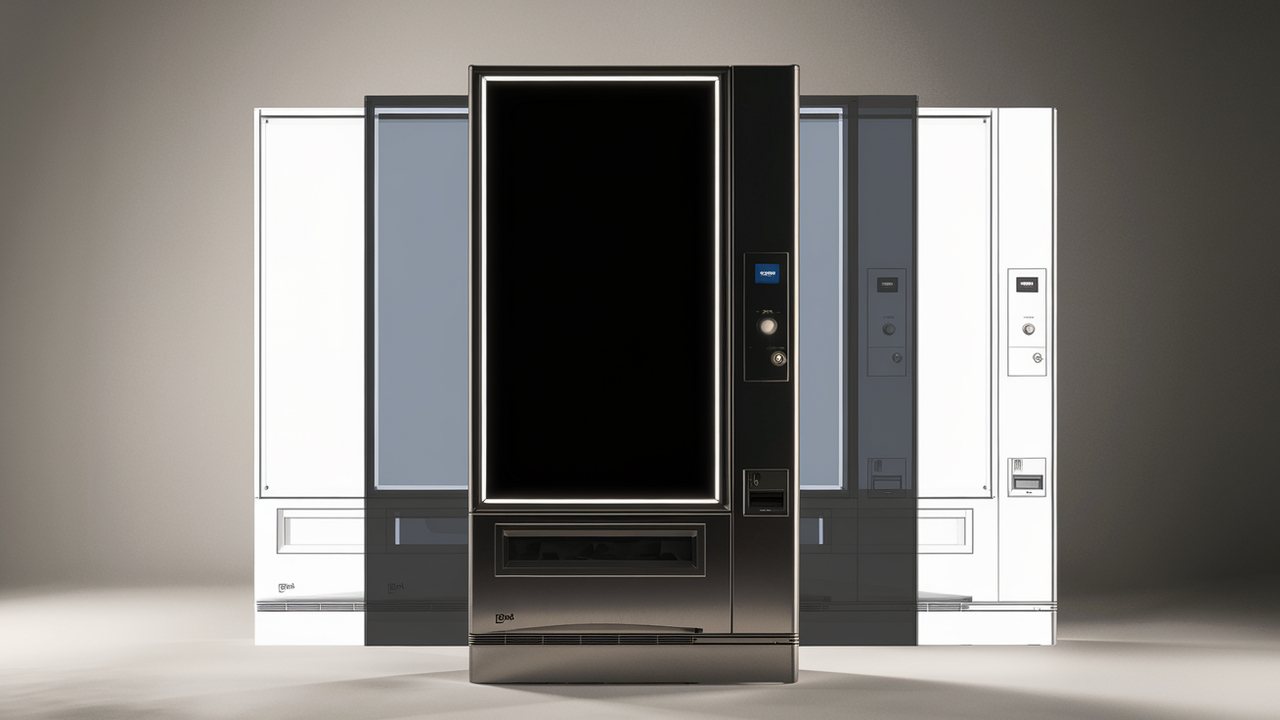What Size Vending Machine Should You Buy for Your Location?
Choosing the right vending machine isn’t just about what you plan to sell — it’s also about what size machine fits your space. Buying the wrong size can lead to poor traffic flow, low sales, or logistical headaches. Whether you’re placing your first machine or adding to an existing route, size matters more than you think.
In this guide, I’ll walk you through the most common vending machine sizes, what fits where, and how to choose the right one for your location type — whether it’s a gym, school, office, or laundromat.

Table of Contents
Featured Snippet
What size vending machine should you buy?
It depends on your location size, customer traffic, and product type. Small countertop vending machines work best for offices or salons, while full-size combo machines are ideal for schools, hospitals, or large breakrooms. Always measure the available space and match it to the machine’s width, depth, and power needs.
Common Vending Machine Sizes (and Where They Fit)
Here’s a breakdown of typical machine sizes and ideal use cases:
✅ Countertop Vending Machines
- Dimensions: 10–18″ wide × 15–20″ tall × 12–15″ deep
- Best for: Reception desks, home offices, barber shops, kiosks
- Products: Candy, gumballs, K-Cups, toy capsules
Why choose this size: Perfect for spaces with limited floor area or to test vending with a low upfront investment.
✅ Compact Vending Machines
- Dimensions: 21–28″ wide × 30–48″ tall × 25–30″ deep
- Best for: Small offices, laundromats, co-working spaces
- Products: Chips, candy, beverages, snacks
Why choose this size: Fits in tight corners, entryways, or near breakroom counters — ideal for up to 25–50 users per day.
✅ Full-Size Combo Vending Machines
- Dimensions: 35–40″ wide × 70–75″ tall × 30–34″ deep
- Best for: Gyms, schools, hotels, hospitals
- Products: Drinks + snacks (dual-zone)
Why choose this size: Designed for high-traffic areas and broad product selection — usually holds 300+ items and supports cashless payments.
✅ High-Capacity Vending Machines
- Dimensions: 45″ wide × 72″ tall × 35–38″ deep
- Best for: Airports, factories, bus stations
- Products: High-volume snack and drink selections, often with smart tracking
Why choose this size: Minimizes restocks and handles hundreds of customers daily. Ideal for heavy foot traffic and multi-shift environments.
Key Factors to Consider Before You Buy
🔹 Measure Your Space First
Always measure your available space and leave clearance for doors to open fully, ventilation, and customer access. Don’t forget power access.
🔹 Match Size to Foot Traffic
If fewer than 50 people will see the machine daily, a compact model is enough. More than 100? You’ll want full-size or high-capacity.
🔹 Product Type Affects Size
Selling only snacks? A snack-only machine may be smaller. Need both drinks and food? Choose a dual-zone combo model with refrigeration.
🔹 Refill Frequency Matters
Smaller machines need frequent restocking. If your route is far or hard to access, a larger machine reduces trips and downtime.
Final Thoughts
Before you commit to a vending machine, think beyond just what you want to sell — consider how the machine fits your location physically and functionally. The right size machine can boost sales, reduce maintenance headaches, and blend seamlessly into your environment.
If you’re placing your machine in a high-traffic area like a school or gym, go with a full-size combo machine. But if you’re just testing the waters in a small salon or breakroom, a compact or countertop unit may be all you need to start.
If you’re placing a vending machine in a shared space like a breakroom or hallway, always get approval from the property owner or building manager. They’ll often tell you how much space is allowed and whether there are existing machines you need to work around.
When you’re tight on square footage but want a premium look, consider machines with slim profiles but vertical storage. Some models are only 28 inches wide but 72 inches tall, offering nearly the same capacity as wider machines without overwhelming the space.
Electrical access is another key factor. Most vending machines require a standard 110-volt outlet, but the placement of that outlet will determine where the machine can sit. If the only available outlet is behind a counter or in a corner, compact or countertop models may be your only option.
In schools and recreational centers, full-size machines are ideal but should be installed with proper safety clearance and ADA compliance in mind. Make sure the display screen and payment system are accessible for all users, including those in wheelchairs.
If you’re operating in climate-sensitive areas (like an outdoor porch or warehouse with no HVAC), you’ll need a machine that’s both the right size and designed to handle temperature fluctuations. Refrigerated or weather-rated machines are usually larger and heavier.
Combo machines are great when space is limited but variety is important. These machines combine snacks and drinks in one vertical frame, often splitting the top trays for chips and the bottom for cans or bottles — making them more space-efficient than having two separate units.
Don’t forget about customer flow. A vending machine that blocks walkways, emergency exits, or entrances will likely get relocated — or removed. Always choose a size that enhances the space, not one that competes with it.
Some operators make the mistake of choosing a small machine to “test” a location, but then miss out on sales because the machine sells out too fast. Instead, think about how often you’ll be able to restock the machine. If the location is far from you, go bigger — even for medium traffic.
Hospitals and hotels benefit from larger machines not just for volume, but for product diversity. Offering 40+ product selections from a high-capacity machine gives customers options any time of day, reducing complaints and increasing revenue per transaction.
In fitness centers, vending machine size should match locker room space and product selection. If you’re selling energy drinks, protein bars, and wellness items, a mid-size combo machine with adjustable coils may give you better flexibility than a snack-only machine.
If you’re planning to place your machine behind glass or in a small alcove, always verify door swing clearance. A full-size machine with a 36-inch wide front door may not open fully in a 40-inch alcove — which can make restocking and maintenance a nightmare.
Finally, consider your future plans. If you expect traffic to grow — or want to scale your vending route — start with a machine size that allows for expansion. Choosing a modular unit that can be upgraded later with cashless payment readers, display screens, or telemetry makes it easier to grow without replacing the machine.

